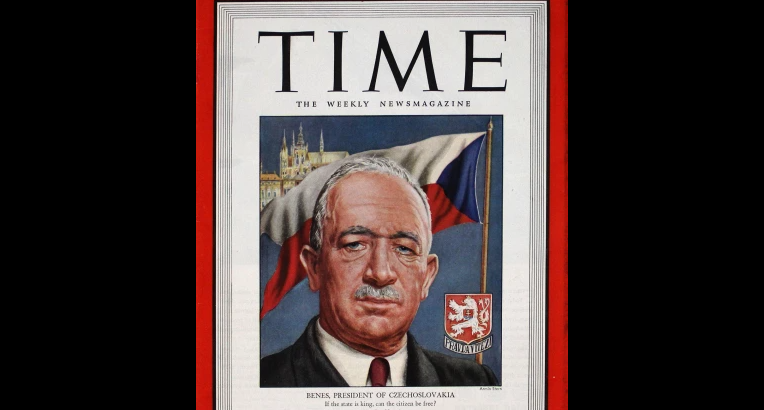Zdeněk Koubek was a transgender track athlete who began his life fascinated by athletics, particularly after his family moved to Brno. He pulled his way up the sports ladder, beginning as a coach and instructor while training, breaking and setting national records, then winning two medals in the Women’s World Games. Koubek’s success, however, was met with doubt, as his androgyny caused the public to question the validity of his competitive success. The issues Zdeněk Koubek faced in the past reflects modern controversial topics in competitive sports.
Edvard Beneš (28 May 1884 - 3 September 1948)
Edvard Beneš was born in Kozlany, Bohemia during the Austro-Hungarian Empire’s rule, but by October 14, 1918, he lived in a different nation, as the empire collapsed in place of the then-new Czechoslovakia. He served as the council chairman for the League of Nations to support the balance of powers in Eastern Europe, creating the “Little Entente.” Eventually, Beneš would succeed Masaryk as the Czechoslovakian president, faced with the threat of Germany, and the rest is history.
National Uprising Day
Kamil Kubik: Impressions
Kamil Kubik grew into an internationally recognized artist from a rough beginning to his life, having to escape his home in 1948 due to radical political changes. He's most famous for his cityscape paintings, including paintings of Central Park, Prague, London, and the White House, along with a scenic painting from nearly every state in the United States. He became the official artist for the White House.
Assassination of Reinhard Heydrich
"The Butcher of Prague" Reinhard Heydrich established himself as a ruthless authority among the Nazis, terrorizing Eastern Europe. Czechoslovakian president Eduardo Bene ordered a team of assassins to kill Heydrich. These assassins were Josef Gabcik, a former blacksmith and locksmith, and Jan Kubis, both of whom rose up the ranks in the Czech military. Of course there were others, 7, in fact, and if they were successful is written.











